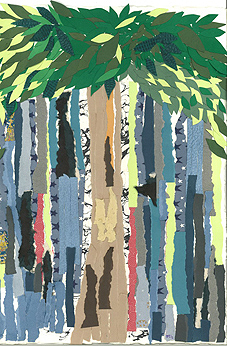Is There an Indian Way of Thinking about Comparative Literature?
E. V. Ramakrishnan
Literature becomes the site where these “social imaginaries“ manifest themselves. The history of literary movements, literary forms and the production and reception of literary texts will have to be examined to see how social imaginaries inform and shape their trajectories. Today comparative studies of literature hardly emphasise the constitutive and constructive role of social imagination in the shaping of literary texts. To move away from an individual centred-view of the text towards a community-centred view of literature will liberate the very idea of Comparative Literature in India. This moment of discovery of ’social imaginary’ affords an opportunity for non- Western cultures which never subscribed to the tenets of individualism in the first instance and had imagined their modernity in alternative ways. The globalization currently underway across the world after the collapse of the Soviet Union and the emergence of a uni-polar world demands new strategies of analysis and evaluation in the wake of cultural products entering the market of commodities. This does not mean we have to position ’Indian literature’ in the commodified market of international culture, but we have to recognize that ’Indian’ cannot be conceived merely in terms of nation or nation-state. Texts produced from India would also include texts produced by people who inhabit an imagined India. In a way our task would be to discover how India is being imagined in countless ways across boundaries of cultures and nations. The “Indian“ in the title does not refer to any geography, but implies a “way“ that could be termed “Indian.“ This also means that we will have to rewrite our literary histories. We have never looked at the trajectories of Arab-Persian imaginaries that shaped our literary discourse or how Chinese or Tibetan affected our narratives. The nation-state affects our capacity to imagine in more ways than we think. The Indian canon which is unofficially in circulation, through academic curriculum and patronage of the state at various levels, clearly steer clear of any literature that is considered ’political’ or ’subversive’. We all know what happened to a scholarly essay by A. K. Ramanujan on the Ramayana in a premier University in India. Apart from a few iconic authors we have never got to study the major authors of Indian languages. Not many educated Indian may have heard of writers such as Fakir Mohan Senapati (Oriya), Vaikkom Muhammad Basheer (Malayalam), Heisnam Kanhailal (Manipuri), Mauni (Tamil) or Pannalal Patel (Gujarati) figure in the “Indian“ canon? The boundaries of linguistic states in India are in fact legislated by the nation-state and this has resulted in the othering of literatures, excluding large areas of experiences from our imaginative life. In fact, in the last sixty years, the literary and cultural contacts between Tamil and Malayalam, Marathi and Gujarati, Bengali and Oriya, Hindi and Urdu (the list could be multiplied) have become scarce and minimal, resulting in creating insular worlds of indifferent and insensitive strangers. Most of the eminent writers of these languages live in complete isolation from the rest of their contemporaries. It is also a fact that many writers of Indian languages do not address an audience beyond their immediate context. Writers such as Tagore and Premchand in their seminal works went beyond their immediate contexts and raised issues that are relevant for the entire country. When Mrinal Sen made a film based on Premchand’s famous story, “Kafan“ he shot it in an Andhra village. Tagore’s “Post-office“ was staged in a concentration camp in Poland a week before all the inmates perished. In his lecture on “Viswa Sahitya“ which is the word Tagore used for “Comparative Literature“ in Bangla, he uses the metaphor of a monument in the making to articulate the composite nature of “universal literature.“ He says: Thus must one view literature as a temple that the universal man (vishwa-manav) has built; writers have come from all times and all nations to work as labourers in that project. The plan of the building is not available to us, but whatever is wrong is immediately demolished; every labourer has to use his natural competence to integrate his own composition into the whole and thereby complete the invisible plan (Rijula Das and Paranjape 2011: 221) Pages: 1 2 3 4 5 6 7 |
Essays in this Forum
Rethinking the Global South
by Mukoma Wa Ngugi From Indian Literature to World Literature: A Conversation with Satya P. Mohanty by Rashmi Dube Bhatnagar and Rajender Kaur Asia in My Life by Ngugi wa Thiong'o The Global South and Cultural Struggles: On the Afro-Asian People’s Solidarity Organization by Duncan Mceachern Yoon The Fault Lines of Hindi and Urdu by Sanjay Kumar Reframing Colonialism and Modernity: An Endeavour through Sociology and Literature by Gurminder K. Bhambra Varieties of Cultural Chauvinism and the Relevance of Comparative Studies by Tilottoma Misra Literature to Combat Cultural Chauvinism: A Response by Shivani Jha Is There an Indian Way of Thinking about Comparative Literature? by E. V. Ramakrishnan Modernity and Public Sphere in Vernacular by Purushottam Agrawal West Indian Writers and Cultural Chauvinism by Jerome Teelucksingh Oral Knowledge in Berber Women’s Expressions of the Sacred by Fatima Sadiki |
